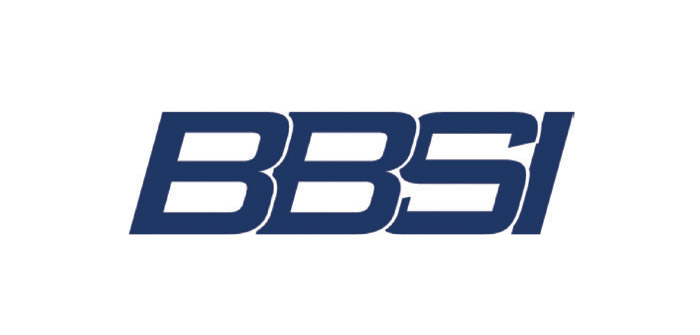A Comprehensive Guide to Conducting a Deep Dive for Your Business
In the dynamic world of small and medium-sized businesses (SMBs), growth and adaptability are essential for long-term success. For businesses in Central Oregon looking to refine their strategies and bolster their operations, the Deep Dive process offers a structured approach to assessing employee engagement, optimizing processes, and identifying pathways to prosperity.
For example, at BBSI Central Oregon, we invite our clients to join us for an immersive session designed to chart the future of their business. Through a focus on the six pillars of business, we facilitate a collaborative environment that remains neutral, allowing for honest assessments and open dialogue. Here’s a guide to conduct a Deep Dive for your organization and create a roadmap for success.
Step 1: Understand the Six Pillars of Business
Before diving into the process, it’s essential to understand the six pillars that form the foundation of any successful business:
- People: Assess employee engagement, skills, and development needs.
- Product/Service: Identify opportunities for innovation and improvement in products and services.
- Processes: Analyze current operational processes for efficiency and effectiveness.
- Pipeline/Sales & Marketing: Understand customer needs, satisfaction, and relationship management.
- Financials: Review financial health, including revenue streams and cost structures
- Vendors/Supply Chain: Foster strong supplier relationships, optimize processes, and focus on sustainability, achieve scalability and resilience, enhance your competitive advantage.
By focusing on these pillars, you can gain a holistic view of your business’s strengths and weaknesses.
Step 2: Recognizing the Need for a Deep Dive
Before you commit to the Deep Dive process, consider the following questions to determine whether it’s the right time for your business:
- Are you facing stagnation or declining performance? If you notice that growth has plateaued or revenues are decreasing, it may be time to reassess your strategies.
- Do you have high employee turnover? Frequent departures can indicate deeper issues within your organizational culture or management practices that need addressing.
- Are your processes becoming increasingly inefficient? If you find that tasks are taking longer than they should or errors are on the rise, it may signal a need for a thorough examination of your operations.
- Is customer feedback consistently negative? Listening to your customers is crucial. If you’re receiving repeated complaints or low satisfaction scores, it’s a sign that you need to dig deeper.
- Have your financials become a source of stress? If budgeting or cash flow issues are keeping you up at night, a Deep Dive can help you identify where improvements can be made.
Step 3: Facilitate the Deep Dive Session
This session should be a safe space where participants can openly share insights and feedback without fear of judgment.
During the session, encourage participants to:
- Share their perspectives on each of the six pillars.
- Identify gaps in current practices.
- Highlight opportunities for improvement and growth.
Step 4: Identify Gaps and Opportunities
This step is crucial for understanding where your business currently stands and what barriers might be hindering progress. Key activities include:
- Gap Analysis: Compare current performance against desired outcomes for each pillar. Identify specific areas where improvements are needed.
- Opportunity Mapping: Highlight potential areas for growth or innovation that could enhance operations or customer satisfaction.
Step 5: Develop the Action Plan
With a clear understanding of gaps and opportunities, the next step is to create a detailed action plan. This plan should outline:
- Specific Action Items: What needs to be done to address each identified gap or seize each opportunity?
- Responsibilities: Assign accountability to team members for each action item to ensure follow-through.
- Timelines: Establish realistic deadlines for each action item to maintain momentum and progress.
This collaborative approach not only empowers your team but also promotes a sense of ownership over the changes being implemented.
Step 6: Draft the Blueprint for Success
At BBSI, this document serves as a roadmap for our clients, ensuring alignment and accountability. The blueprint should include:
- A Summary of Findings: A clear overview of gaps, opportunities, and the rationale behind the proposed action items.
- The Detailed Action Plan: A breakdown of specific tasks, assigned responsibilities, and deadlines.
- Metrics for Success: Define how success will be measured for each action item, ensuring clarity on expectations and outcomes.
This also serves as a reference point for future assessments and adjustments.
“In collaboration with BBSI, Pacific Crest Bus Lines is set for strategic growth and market expansion with a newly developed business blueprint. This comprehensive plan charts a clear course for success, prioritizing targeted driver recruitment, new route expansions, and strengthened operational support to meet increasing demand. Beyond just planning, BBSI is actively supporting Pacific Crest Bus Lines in achieving these goals, providing consistent accountability, and tracking progress to ensure sustainable growth. This partnership underscores Pacific Crest’s commitment to enhancing service quality and operational excellence across Oregon.” ~ Anthony Ferro, President, Pacific Crest Bus Lines
Step 7: Follow Through and Adjust
Regularly check in on the progress of the action items outlined in your blueprint. Schedule follow-up meetings to discuss accomplishments, challenges, and any necessary adjustments to the plan. Flexibility is key, as the business landscape can change rapidly, and your strategies may need to adapt accordingly.
Conclusion
By focusing on the six pillars of business and following a structured approach, SMBs in Central Oregon can identify gaps, seize opportunities, and create actionable plans for growth.
By working together with your team, you can build a sustainable roadmap that not only addresses immediate challenges but also paves the way for long-term success. Embrace the Deep Dive process and watch your business flourish.
As you reflect on your own business, consider whether it’s time to initiate a Deep Dive. The insights gained from this process can lead to significant improvements, making it an investment in your business’s future.





